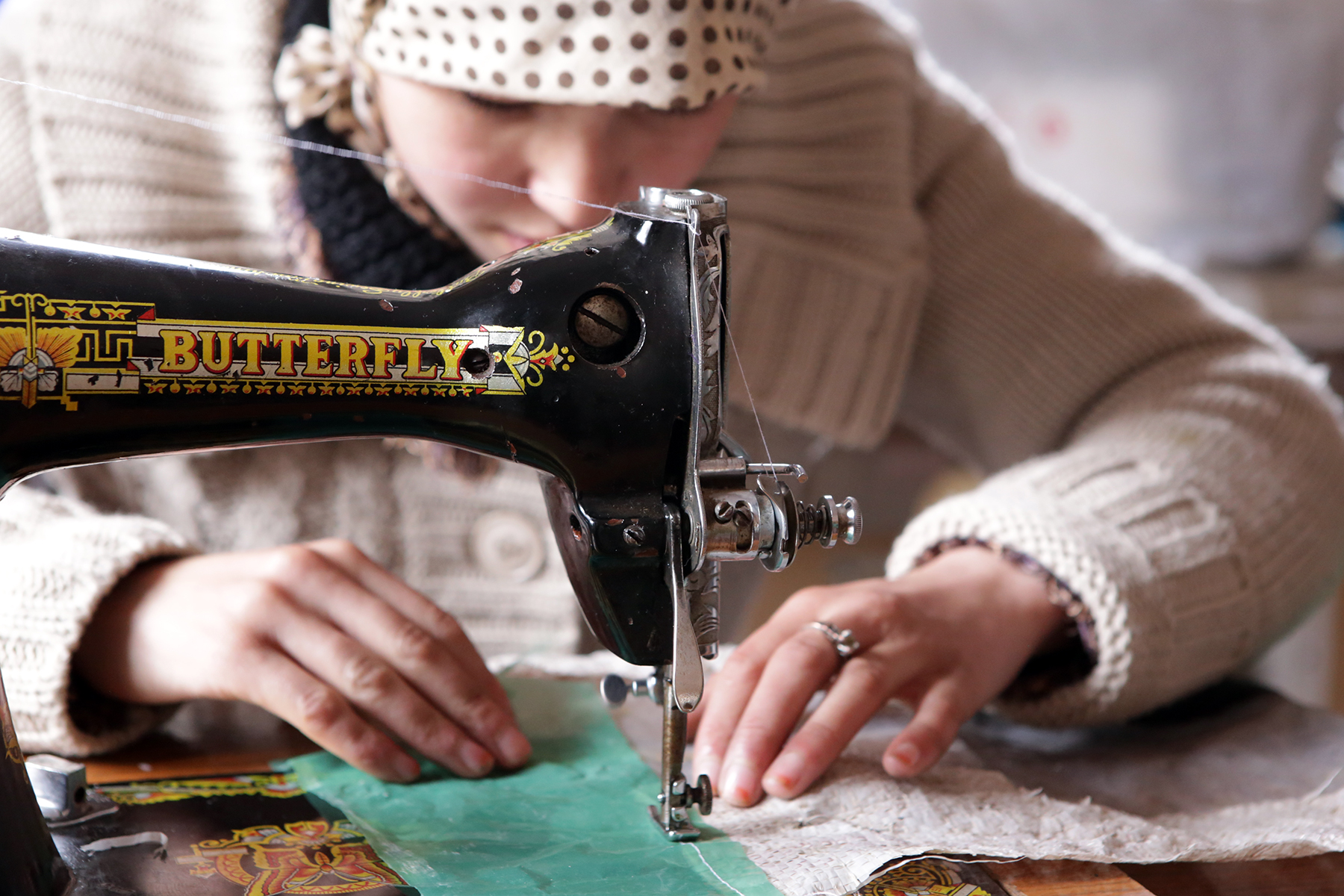Margin of Hope
A project focused on social, ecological and educational activity in Atlas, Morocco
Curated by Alessandro Facente (Curator at Artists Alliance, New York)
Remote program of the 14th Marakech Biennial

Through a series of interventions and projects involving the local population, Vackar developed what he calls "transitive and participative objects", engaging the local population in every step of the process. Along the lines of such research, the artist has actively worked on the weaving of a traditional Moroccan carpet and a djelaba, made by using plastic waste collected along the dry bed of the river that runs through Imlil. Having the final shape of a patchwork, both works were used as ceremonial instruments for some traveling lectures and workshops on ecology with school children from the Douar Ait Souka and Aremd, and from the hills of the imposing natural scenario which surrounds the association Tiwizi in the Asni village.


The desire to get into the places of the education stems from the strong need to let the two objects, carpet and djalaba, created tanks to the active participation of the local population and of the natural presence of the plastic in the environment, become part of the daily lives of these communities and to recall them of the immanent and concrete problem.




A will which, however, was already inherent in the construction process of the two works. In fact, the artist, leaving the seamstresses of Imlil total freedom of expression, allowing them to decide the aesthetic direction that the carpet and the djelaba were to take.
Involving the school teachers and the members of the local associations has been crucial in the plan to use those objects in the activities, programmes and learning objectives that these local institutions offer to their children, thus becoming part of their daily lives.
Hence in the Ait Souka primary school, a group of boys and girls have been invited to sit on the carpet and debate with the artist, through the intermediary of the teacher as well, about environmental issues, and the danger of throwing away plastic bottles and polluting the environment with all kinds of plastic waste and burning plastic in the open air areas as brutal remedy with which often the local inhabitants dispose the waste.
Similarly, in the high school of the village of Aremd, the teacher collected dozens of boys and girls, who in a circle around the carpet attended the lecture on the same topic. At the end of the day the carpet was donated to the school and installed in the classroom which will be dedicated to the arts in the near future.
With great surprise the Association Féminine Tamgharte Noudrane, an association of women living in the village (this kind of associations serve in Morocco often to enable unmarried women to have a modest income) of which these women represent the workforce, has also contributed to the collection of the raw material, providing the plastic that they had picked from the ground on the daily journey from their private homes to the laboratory.








Working therefore as figures with a substantial role has enabled Vackar’s approach to show itself with its distinctive traits since the very early stages of the construction process of his work, i.e. to turn the work from a strict object, into a final generous and friendly relationship, and then a “ transitive an participatory object”.
In such changed context, the observer finds in those artworks the unexpected features of a ceremonial instrument that acts on its own identity, offering also as an ideal platform on which it can actively intervene, giving to it the infinite ways and human experiences that derive from such interaction.





Now drawing a parabola that saw the two objects transforming into two wonderful blossoms of social weaves, Adam Vackar has gradually developed the original project, working on a further social and environmental investigation, using the waste plastic bottles found during the daily cleaning activities. Initially collected for ecological purpose, the bottles have then become recipients of hope. Teens and children were asked by Vackar to write on paper messages in which they expressed what they wanted for their environment in the future. And the waste plastic bottles became the recipients of these messages, conserving them for nearly an eternity.
Once at the Tiwizi hills, the bottles were filled with these messages in some sort of ceremony in which children, dressing in turn the djelaba, recited aloud their wish, put it inside these bottles, which then decorated a 500 year old dead tree nearby the area.




The topic tackled by Vackar in his investigation is the nature of the human behavior, starting from the naivety of the children who are already learning the local social and cultural stereotypes. The artist addresses this issue by manipulating two objects typical of the place - also stereotypes - built with dumped materials, which in turn are themselves stereotypes of a place that is going to deal with the concerns of environmental issues and of waste disposal.




The artist moves with the confidence of a Berber people on the brink of its independence, almost taking to the extreme this alleged quality conquered by their conquerors, who, besides the Arabs, included the Romans and the French. In schools today students learn, write and read the Berber language, an alphabet that has made its comeback at school, greatly reducing the distance of time and space from which it comes. Hence, these two elements are used to conceptually project his work to his, being part of an installation that brings the objects to conquer remote places: the carpet in a school in one of the latest villages populated before the long and lonely journey to the Toubkal; the isolated bottle tree and the Djelaba, in the highest space of the Tiwizi association, overlooking the vastness of the valley.
Text by Alessandro Facente
Independent curator and writer